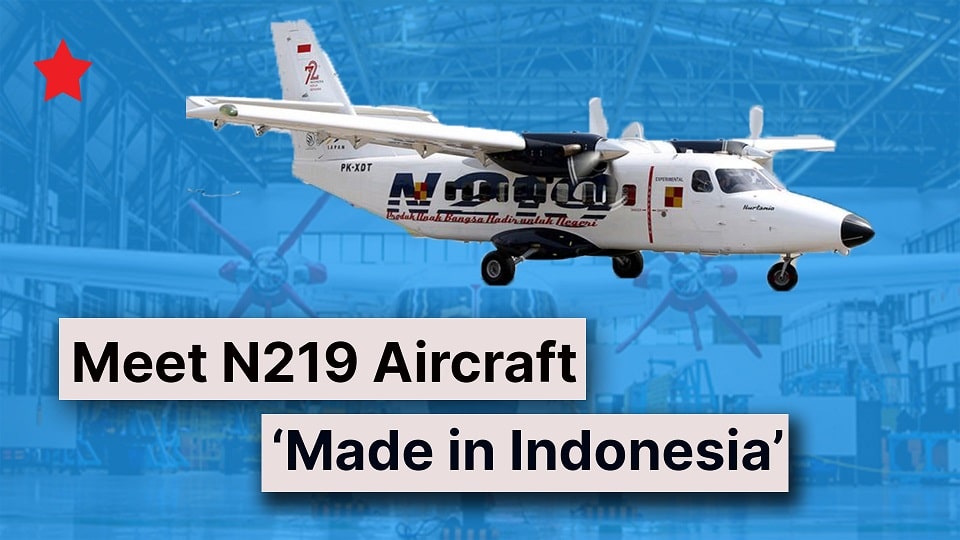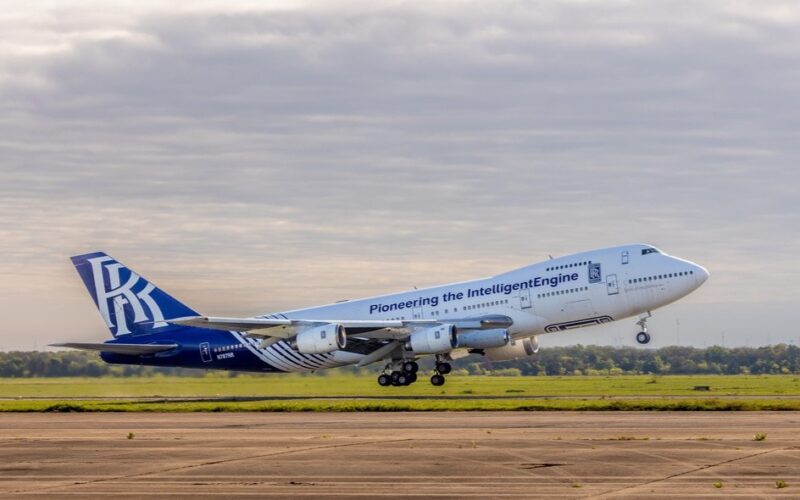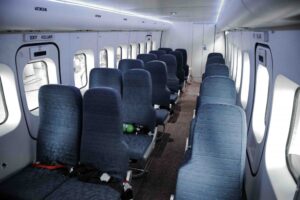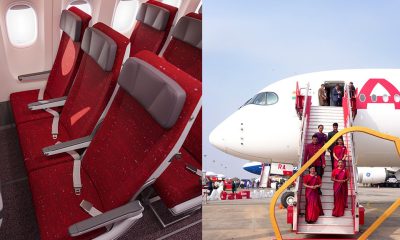Aerospace
N219 Nurtanio is an Indonesian-built aircraft : Specification, Range & Seats

Welcome back to Jetline Marvel. Did you know that Western nations are more dominant in the aviation industry. because they put a greater priority on research and development, and are skilled at producing high-quality aircraft, based on their experiences. However, despite having a lesser budget project, one country is currently progressively spreading out its aviation technology, and they are doing their best to create their own aircraft. Yes, we’re talking about Indonesian-made N219 planes. It all began in 2006, when they decided to build and manufacture this versatile aircraft.
PT Dirgantara is a corporation located in Indonesia. PTDI has effectively developed and grown its competence as an aerospace industry. since its establishment in 1976 as a state-owned enterprise in Bandung, Indonesia.
Let’s speak about the N219 aircraft, which is a new generation multi-purpose aircraft with the largest cabin cross section in its class, a proven and efficient engine, modern avionics system, fixed tricycle landing gear, and a wide cargo door to make changing aircraft configuration easier. As a result, N219 Nurtanio is designed to give operators with technical and economic benefits.
This aircraft may be employed for a variety of missions, including passenger and troop transport, freight and medical supplies, surveillance, and patrolling.
The aircraft is 16.49 metres in length, 19.5 metres in wingspan, and 6.18 metres in height.
The maximum take-off weight of this aircraft is 7,030 kg, while the fuel capacity is 1,600 kg. It has a maximum range of 890 kilometers and a payload of 2,313 kg.
What is the Boeing P-8I in the Indian Navy used for?
It has a takeoff distance of 435 metres and a landing distance of 509 metres. It has a top speed of 390 kilometres per hour and a stall speed of 109 kilometers per hour. It has a ceiling altitude of up to 24000 feet and can operate at a height of 10,000 feet. it has Climbing speed 9.85 meters per second.
JM Exclusive tour onboard the EMBRAER E195-E2 Demonstrator.
Two Pratt & Whitney turboprop engines power this aircraft. can generate up to 630 kW The propeller is a four-bladed Hartzell
PERFORMANCE
|
In 2019, six aircraft were expected to be produced, expanding to 16 at 2020 and 36 per year in a new $90-100 million facility financed by equity participation, private-public partnerships other investor.
First A319neo flight with 100% sustainable aviation fuel
The selling price of N219 aircraft, according to PTDI‘s Production Director, Arie Wibowo, is in the region of US $ 6 million per unit, or roughly Rp 81 billion.
Prior to local certification, PT Dirgantara Indonesia (PTDI) has received orders for 120 of its N219 multi-purpose utility turboprops.

Aerospace
China Secures Production Certificate for Mass Production of Pilotless eVTOL Aircraft

The first passenger-carrying pilotless electric vertical takeoff and landing (eVTOL) aircraft in the world, the EH216-S, has received the Production Certificate for its eVTOL aircraft from the Civil Aviation Administration of China (CAAC).
This is a significant milestone for EHang Holdings Limited, the leading UAM technology platform company in the world. This outstanding accomplishment is another big step towards mass manufacturing for the eVTOL aircraft and the ensuing commercial operations, building on the ground-breaking acquisition of the Type Certificate and the Standard Airworthiness Certificate for the EH216-S.
The PC is a crucial certificate that the aircraft maker receives from the CAAC, the country’s aviation authority. By obtaining this certificate, EHang has demonstrated that it has set up a quality management system for mass production that satisfies the airworthiness regulation standards set forth by the CAAC, and the company has been given permission to continue producing mass quantities.
It is also a strong guarantee of the calibre of the goods made by EHang. Raw materials, supplier management, manufacturing organisation, production quality control, aircraft pre-delivery test, after-sales repair and maintenance, etc. are all included in the mass production quality management system for the EH216-S.
To ensure that every aircraft and its components that roll off the production line strictly adhere to the approved type design and safety requirements, the system sets clear guidelines and documentation for every step in the production procedure. This ensures comprehensive traceability and safety control.
Aerospace
Four Airbus A380 Superjumbos lined up to be scrapped

In a strategic move aimed at reclaiming valuable resources from the iconic Airbus A380 aircraft, VAS Aero Services and Dr. Peters Group have announced a significant collaboration.
This partnership marks a milestone in aviation logistics and aftermarket services, with four of these colossal planes slated for teardown and redistribution of used serviceable material (USM).
The venture between VAS Aero Services, renowned for its expertise in aircraft dismantlement, and Dr. Peters Group, a prominent Germany-based investment fund management firm, underscores a commitment to sustainable aviation practices. This isn’t their first foray into scrapping A380s; their successful partnership has already seen the dismantlement of these aircraft, making them pioneers in this niche.
Under the agreement, the latest consignment brings the tally to eight A380s entrusted to VAS by Dr. Peters Group. Managing Director Christian Mailly of Dr. Peters Group emphasized the trust placed in VAS, citing their unparalleled capabilities in dismantlement and aftermarket sales network. It’s a strategic move in response to the growing demand for quality USM parts, particularly with the resurgence in reliance on the A380.
Notably, the teardown process will be carried out at various locations, optimizing the positioning of harvested parts to cater to different markets. While some parts will be positioned in Europe to support operators in the region and the Middle East, others will remain in the Asia-Pacific region. This meticulous strategy ensures efficient access to spare parts, benefiting MROs and airlines across these markets.
The decision to retire these A380s comes at a time when operators are reassessing fleet strategies amidst evolving market dynamics. Despite initial plans for quick retirement due to the emergence of more fuel-efficient alternatives, factors such as a rebound in long-haul demand and delays in new widebody deliveries have prompted operators to reconsider. The A380, with its unique capacity and capabilities, presents a practical solution for short-term capacity management.
Aerospace
Rolls-Royce Launches Test Flights for Revolutionary Pearl 10X Engine

Rolls-Royce reports that the company’s dedicated Boeing 747 flying testbed has seen the successful start of the Pearl 10X, their newest aero engine designed for the business aviation industry.
Dassault, a French aircraft manufacturer, has decided to use this engine only to power their newest flagship, the Falcon 10X. As stated at last year’s Capital Markets Day, the commencement of flight testing represents a significant milestone for both Rolls-Royce and the Pearl 10X programme as the company concentrates on expanding in the business aviation industry.
The first Rolls-Royce engine to power a Dassault business jet is the Pearl 10X, the newest engine in the state-of-the-art Pearl engine family. The Pearl 10X was chosen by the French aircraft manufacturer as their new flagship model, demonstrating even more of Rolls-Royce’s dominance in the business aviation engine market.
Over the next few months, pilots and flight test engineers from Tucson, Arizona, USA, will put the engine through its paces. The flight test programme will comprise testing of the nacelle’s anti-icing system, in-flight relights, engine performance and handling checks at various speeds and altitudes, and fan vibration tests at various altitudes.
The new auxiliary gearbox, which enables higher additional power extraction, and the ultra-low emissions ALM combustor, which is compatible with 100% Sustainable Aviation Fuel (SAF), have undergone extensive testing as part of the ground-based development programme thus far. The engine will be the most potent business aviation engine in the Rolls-Royce lineup. It exceeded its intended thrust levels during the very first test run. With over 2,300 testing hours successfully completed on the Pearl 10X engine configuration as well as the Advance 2 demonstration, the programme is moving forward at a rapid pace.
With the most economical engine core available for business aircraft, the Advance2 engine, coupled with a high-performance low-pressure system, gives the Pearl 10X an exceptional thrust of over 18,000 lbf. With a 5% increase in economy over the previous generation of Rolls-Royce commercial aviation engines, the Pearl 10X






















